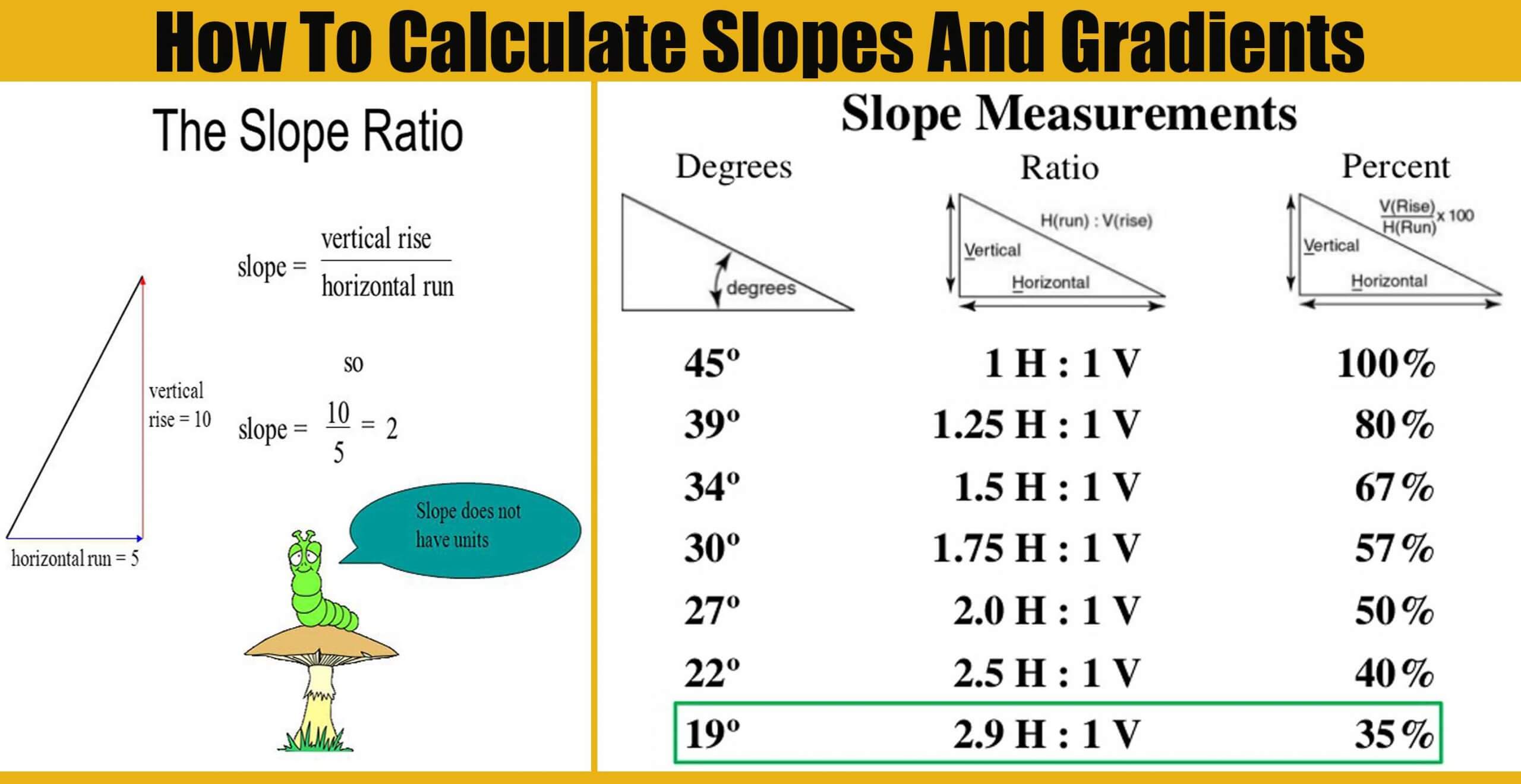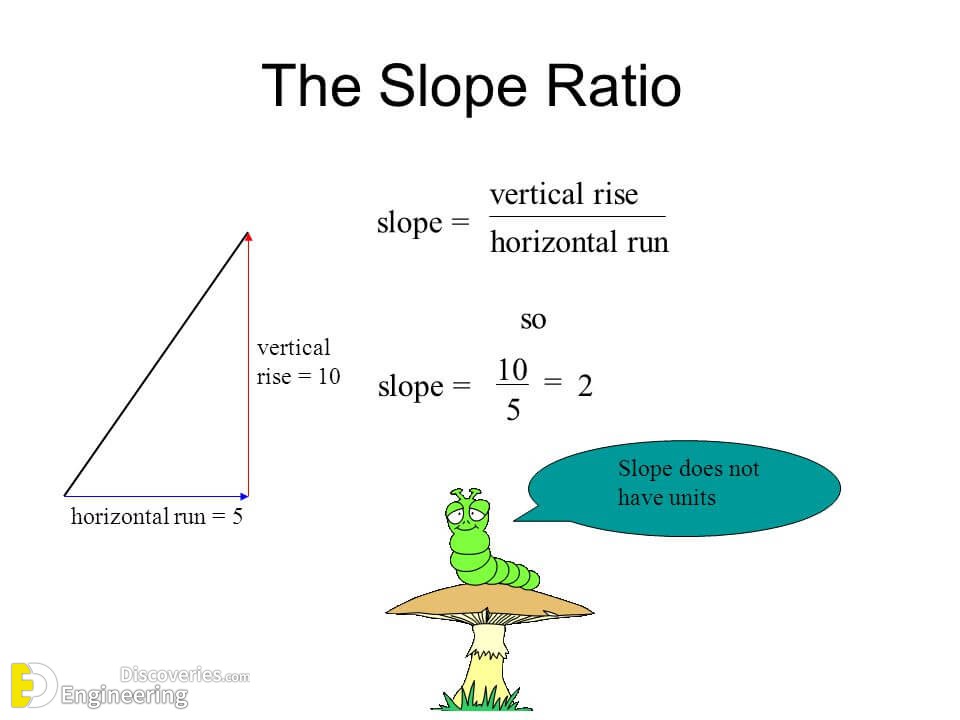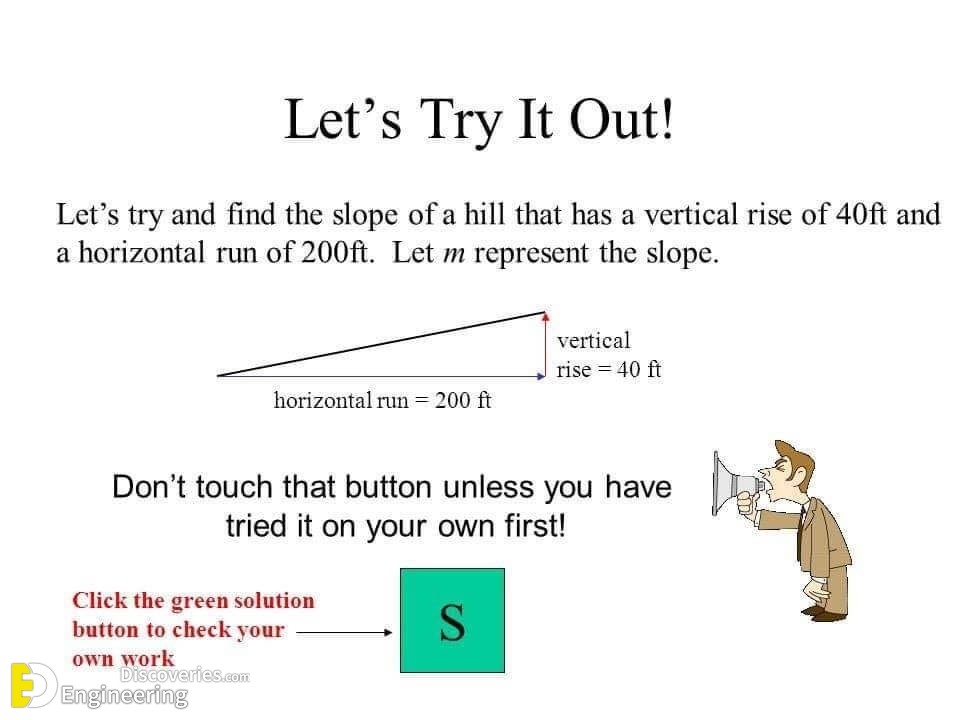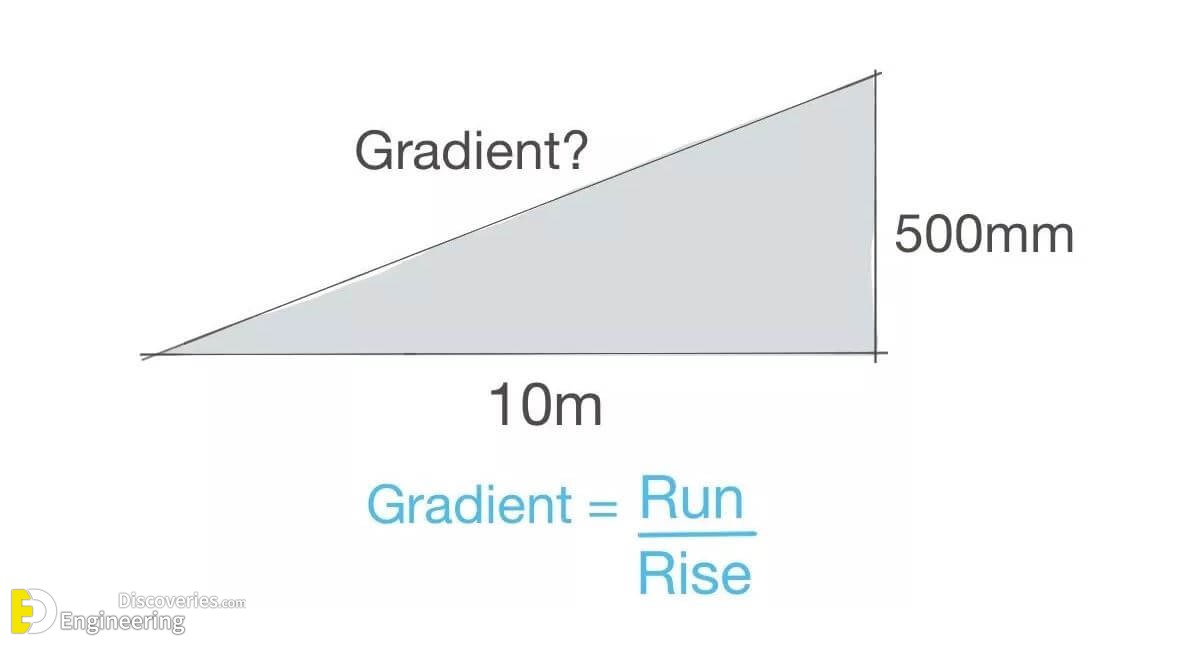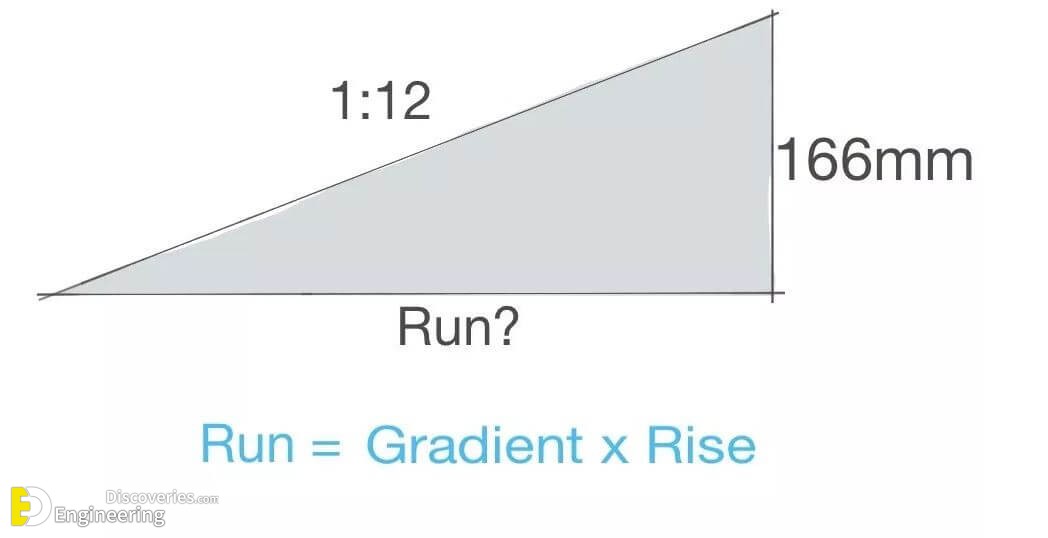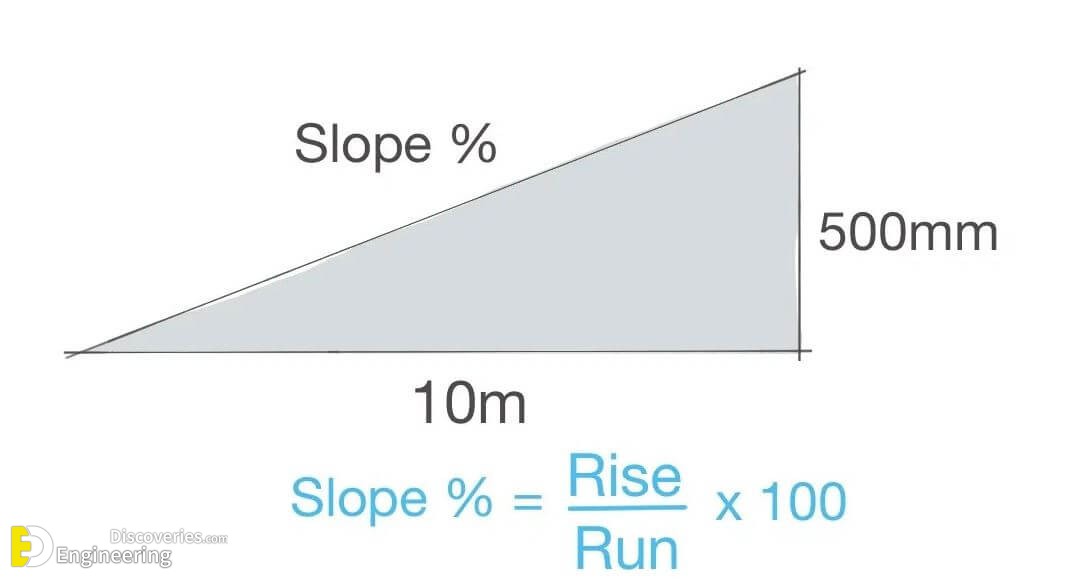An engineer needs to know how to calculate slopes and gradients in differing situations. The most common occurrence of this is working with ramped access to buildings, groundworks, car parks, and so on. Slopes can be measured in angles, percentages, and ratios. For this post, I will focus on the measurement of slopes in ratios, mainly because gradient ratios are stated in the building regulations.
How to work out the gradient
Remember to convert units so they are the same. For example, we have a 10m ramp run and a rise of 500mm. Convert the run to 10,000mm.
Example:
We want to work out the gradient of a ramp that has a run of 10m and a rise of 500mm.
Gradient = Run / Rise
Gradient = 10m / 500mm
Convert the units:
Gradient = 10,000mm / 500mm
Gradient = 20
Gradient = 1:20
How to work out the rise
We want to work out the rise of a ramp that has a run of 5m and a gradient of 1:15.
Rise = Run / Gradient
Rise = 5m / 15
Convert the units:
Rise = 5,000mm / 15
Rise = 333mm
How to work out the run
We want to work out the run of a ramp that has a rise of 166mm and a gradient of 1:12.
Run = Gradient x Rise
Run = 12 x 166mm
Run = 1,992mm
Run = 1.99m (round up to 2m)
How to work out slope percentage
If we want to work out the percentage of a slope, you first must ensure you convert the units so they are the same, similar to working with the ratios above.
Working on one of the previous examples, let’s assume we have a slope that has a run of 10m with a rise of 500mm. First, convert the units.
Rise: 500mm
Run: 10,000mm
Percentage of slope = Rise / Run x 100
Percentage of slope = 500 / 10,000 x 100
Percentage of slope = 5%
Watch this video for more information

